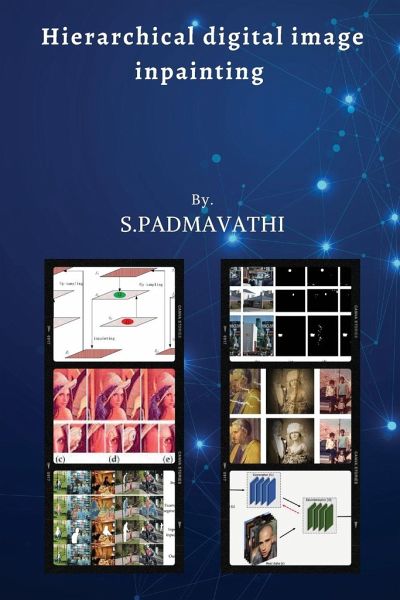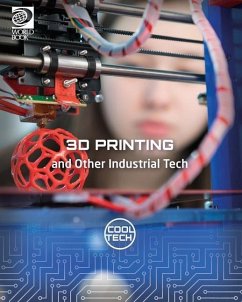Nicht lieferbar

Hierarchical digital image inpainting
Versandkostenfrei!
Nicht lieferbar
Inpainting is a technique used by artists to fill in the damaged portions of a painting. They use the colors that are present in the boundary of the damaged portion and extend them smoothly from the border. Once the major colors are reproduced they fill in the fine details by looking at the surrounding undamaged portion. This process is informally called as filling in the gap. Digital image inpainting is done on digital images to fill in the cracks or to remove the unwanted text in the picture. When it tries the recover the image hidden by an object or a person, it is more generally addressed ...
Inpainting is a technique used by artists to fill in the damaged portions of a painting. They use the colors that are present in the boundary of the damaged portion and extend them smoothly from the border. Once the major colors are reproduced they fill in the fine details by looking at the surrounding undamaged portion. This process is informally called as filling in the gap. Digital image inpainting is done on digital images to fill in the cracks or to remove the unwanted text in the picture. When it tries the recover the image hidden by an object or a person, it is more generally addressed under Disocclusion. When generating a pixel in the higher resolution, it over laps with Super resolution algorithms. Digital image inpainting is generally used in artistic world in recreating the missing portion or for removing an object to create special effects. A digital inpainting algorithm does not have knowledge of the missing values, it utilizes the information present in the known area to fill in the gap. The perfection in the propagation of the color information (photometry) and propagation of the structures (geometry) decides the success of the algorithm. The existing algorithms either fail in the propagation of the photometry for a larger area and/or fail in the propagation of the geometry. Partial Differential Equation (PDE) based inpainting algorithms fail in propagating the information for a larger area and texture synthesis based inpainting algorithms fail in propagating the structures. Certain algorithms, such as Exemplar based inpainting algorithms, achieve both the propagation for a limited exten The existing algorithms either fail in the propagation of the photometry for a larger area and/or fail in the propagation of the geometry. Partial Differential Equation (PDE) based inpainting algorithms fail in propagating the information for a larger area and texture synthesis based inpainting algorithms fail in propagating the structures. Certain algorithms, such as Exemplar based inpainting algorithms, achieve both the propagation for a limited extent. The technique presented in this thesis is inspired by the response of Human visual system in viewing a photograph from various distances. When viewed from a farther distance, the coarser information in the image could only be viewed. As the distance reduces, the finer details could be seen. Hence filling in the coarser information and then the finer information will result in better reconstruction. The Phenomenon is best imitated by the hierarchical multi resolution models. This model is used in Hierarchical Total Variation (TV) inpainting, Hierarchical exemplar based inpainting, Hierarchical Wavelet based inpainting and Hierarchical Laplacian based inpainting. Existing PDE based TV algorithm and Exemplar algorithm are modified in Hierarchical TV inpainting and hierarchical Exemplar based inpainting respectively to suit the hierarchical structure. Two different variation of Exemplar based inpainting viz. Hierarchical search space refinement and Hierarchical filling algorithms are suggested under Hierarchical Exemplar based inpainting. When few interior values are known then the filling-in becomes easier. This criterion is achieved by the Top down approach of filling in the hierarchical model. This method is followed in all the hierarchical models except Hierarchical search space refinement algorithm.







